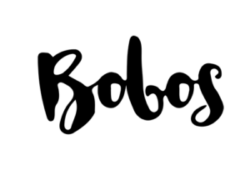C’era una volta un piccolo paese, affacciato sui pendii del Monto Zovo, tra le meraviglie naturali delle dolomiti bellunesi. Il piccolo borgo, affondava le sue radici nell’epoca medievale, conservando tutta la storia, gli aneddoti e la ricchezza della sua cultura per creare una vera e propria realtà autonoma, con una lingua locale e caratteristiche uniche, in tutta la Val Comelico. Il suo nome era Costalta ed era facilmente riconoscibile grazie alle sue particolarità architettoniche e alle produzioni artistiche come scultura, pittura e poesia. Un gioiello di valore inestimabile, un piccolo centro abitato animato da cultura, antiche tradizioni e la semplicità della vita di paese, che ad oggi è probabilmente una delle più grandi ricchezze culturali del nostro Paese.
Once upon a time there was a small village, located upon the Monte Zovo slopes, surrounded by the natural wonders of Belluno Dolomites. The hamlet’s origins were deeply rooted in the Medieval age, preserving all the stories and the richness of its culture, to create a real indipendent community inside the whole Val Comelico, with a local language and unique characteristics. Its name was Costalta and it was easily recognizable thanks to its architectural features and its artistic productions, such as sculpture, paintings and poetry. A priceless jewel, an hamlet animated by culture, old traditions and the simplicity of a “small village life”, which is one of the biggest cultural treasures of the Italian country.

Fino ai primi anni del ‘900, tutte le case erano in legno, costruite con l’antichissima tecnica del Blockbau (tronchi di legno incastrati tra di loro) e caratterizzate dai classici tetti spioventi, l’unica struttura locale in muratura era la chiesa, uno dei fulcri della vita di comunità. Con l’arrivo della modernità, arrivarono ovviamente anche i primi cambiamenti, il legno e le sue strutture furono sostituiti da case ben più moderne, andando però a demolire e a privare il borgo della sua anima originale. Furono lasciate intatte solo una trentina di case, che rappresentano ad oggi il fulcro della storia del paese.
Until early ‘900, all the house were made of wood, built with the ancient Blockbau technique (wooden logs wedged in themselves) and characterized by the typical sloping roofs, the only brickwork of the village was the white church. But with the modernity, some problems arouse, all the wooden house were substituted by new ones, destroying and removing the real soul of the hamlet. Only thirty buildings were untouched, and nowadays they represent the history of Costalta.

Un gruppo di amici ha deciso negli scorsi anni, di dare vita a un processo di recupero edilizio delle case conservate in legno, per metterle a disposizione degli ospiti, così da poter offrire un’esperienza unica in un borgo che ha davvero tanto da raccontare. Ma non solo, a partire dal 2000, per dieci anni sono state realizzate sculture in legno, una per ogni casa antica, per valorizzare e riportare alla memoria un passato ancora forte, radicato negli abitanti di Costalta che con questo progetto estremamente moderno, hanno voluto riportare in vita la loro cultura e le loro tradizioni antiche.
A group of friends decided in the last years to start a new process of building recovery for the untouched houses, to make them available for guests. The result is a unique touristic experience inside a village that has a lot to tell. Starting from 2000 every year a local artist has realized a sculpture for each old house, not only to decorate them, but also to bring back to the memory a strong and deeply rooted past. With this extremely modern project, the people of Costalta have given a new life to their culture and their ancient traditions.

Nel giugno 2013 apre i battenti il nuovissimo Albergo Diffuso Costauta (chiamato così in ladino dolomitico), un’innovativa forma di ospitalità diffusa, che ha l’obiettivo di rilanciare il paese, guardando al futuro e creando una forte coesione tra il patrimonio degli anziani e la risorsa dei giovani. La reception si trova nella piazzetta al centro del paese, presso il panificio-pasticceria Eicher, vera istituzione di Costalta, dove viene servita anche la prima colazione. Le residenze, recentemente ristrutturate per garantire il massimo comfort agli ospiti del borgo, sono sparse per il paese.
In June 2013 the new Albergo Diffuso Costauta opened its doors to tourists. It is an original kind of “ospitalità diffusa”, willing to relauch the village, looking at the immediate future and creating a strong connection between the elderly inhabitants and the young people. The reception is located in the square of Costalta, at the Eicher bakery, a real institution of the hamlet. The accomodations, recently renovated, are spread around the village and breakfast is served inside the bakery.

Nel luglio del 1987 i sentieri che scendono dai boschi al paese, furono percorsi da papa Giovanni Paolo II, rendendo famosa l’intera vallata. Oggi, l’AD organizza passeggiate sui sentieri percorsi da Wojtyla, seguendo le orme della storia e concludendo l’itinerario con un gustoso rinfresco. Per gli amanti della montagna, della natura e dell’artigianato antico, l’AD Costauta è pronto ad accogliere calorosamente i propri ospiti in tutti i periodi dell’anno e a offrire sempre un’esperienza originale e autentica.
In July 1987 the trails that lead to Costalta from the surrounding woods, were walked by pope Giovanni Paolo II, who made famous the whole valley. Today, the AD organizes walks on these trails, following the historical tracks and finishing the day with a delicious banquet. For all the nature, mountain and handcraft lovers, l’AD Costauta is ready to welcome its guests in every month of the year, to offer them an original and authentic experience.

